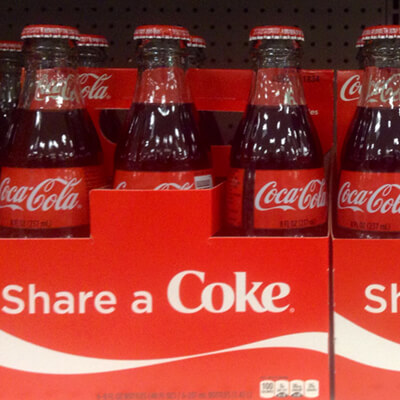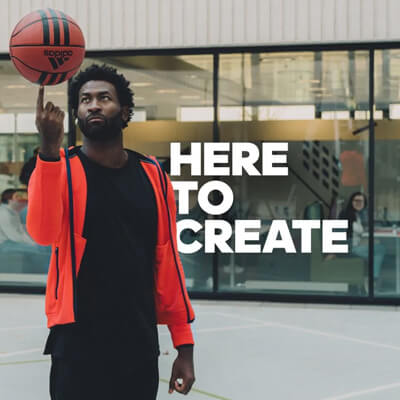A recent study by Microsoft revealed the average human attention span lasts around eight seconds. In the time it takes most people to blink three times, they’ve moved from one piece of digital content to the next.
This is especially true with customers online. Since around 81% of users skim-read online content, visual images are increasingly considered one of the most effective digital marketing tools. In fact, 32% of marketers consider visual images the most important kind of content for their campaigns.
When it comes to using images with social media marketing, 60% of users age 18-24 want to see social images and 52% want to see videos, according to a recent Hubspot survey investigating the types of visual content consumers want businesses to share on social media.
Today over 140 million businesses use Facebook to find new customers and interact with their communities, making competition to reach people in their newsfeeds more challenging than ever. Understanding best practices for creating engaging visual content is an essential part of the formula for online success.
Keep reading for tips on how to create eye-catching content to support your next social media marketing campaign.
Post a variety of visual content
Assuming you post the same content to all these platforms with minor variations, you’ll post between 12 and 30 visual pieces a month for your company. To keep the material from getting stale, take advantage of the full breadth of visual content available.
Post a short video or GIF one day, a high-quality photograph the next, and a text-based image the day after that (e.g., infographic, stat, tip, or testimonial). Since different content appeals to different groups, injecting a little variety into your content stream will help you boost engagement and appeal to a wide range of target audiences.
Pro tip: Use a content style guide to ensure your posts have a consistent brand voice/tone and visual format.
Set a social media schedule and stick to it
At a minimum, you should post visual images to major social platforms such as Facebook, Instagram, Pinterest, and Twitter at least three times a week. If possible, increasing your posting frequency to one piece of quality content per day is even better. This shows consistency and dedication, all while boosting your interactions with your customers.
Make sure your visuals serve a purpose
Before you develop visual content to go with a new post, consider its purpose.
Educational
Educational posts often feature visual content like infographics and stats that provide the information your customers need to know. When done right, these posts can help position your company as a thought leader in your industry—and potentially persuade your target audience to take action.
Case study: World Wildlife Foundation

The World Wildlife Foundation ran a campaign with the goal of boosting awareness about impending species extinction. As part of this outreach, WWF used social media to post a series of educational photos of endangered animals that were created using only as many pixels representing how many of each are left in the world.
In the example to the right, since there are only 60 Amur leopards left in the wild, the WWF represented their waning numbers with an abstract, blurry photo created using only 60 pixels.
This campaign combined data and provocative social media visual content to send a memorable message about the importance of taking action to help save endangered species before it’s too late and raised the WWF’s profile as a resource for learning more about this issue.
Entertaining
Entertainment-focused campaigns often feature fun visual content like short videos, memes, and animated GIFs that have a high potential of going viral.
The key to developing a winning campaign is to know your audience and share visual content that will resonate with them. That’s exactly what the marketing team at the New York Met Museum did to build excitement around their Michelangelo exhibit. Using humorous photos showing someone dressed in a Teenage Mutant Ninja Turtle Michelangelo costume looking at art by Italian Renaissance artist Michelangelo, this campaign had huge organic growth when followers—and their friends—shared it over and over with their networks.
Engaging
Sharing personalized social media visual content—or images that feel like they were made just for you—is a great way to create buzz and strengthen your connection with your customers.
You don’t have to be a small business to make your customers feel seen. If you create something people want to be a part of, the user-generated content will come, and the connections will grow.
Case study: Coca-Cola

One of the biggest engagement successes in recent marketing history was Coca-Cola’s multi-national #ShareACoke campaign that prompted their target audience to share personal photos featuring their product.
With the call-to-action built into the #ShareACoke hashtag, Coca-Cola made it clear how you could join in the virtual conversation.
During the first year of the effective campaign, Coca-Cola gained roughly 25 million new Facebook fans.
Customize your visual content for each channel
Before you start posting visual content, it’s essential to understand content-formatting optimization. For example, the 2020 Facebook post image size is 1200×630 pixels, and the 2020 Instagram post image size is 1080×1080 pixels.
Optimizing your visual pieces to meet platform-specific sizing guidelines will promote higher engagement and help you avoid customer frustration.
When you’re planning out your visual content posting schedule, don’t forget the most crucial element of any advertisement: storytelling. Ideally, you want to create stories with your visuals, not just post a jumble of random, disconnected photos.
Case study: Adidas

Adidas’ ongoing twitter campaign #HereToCreate regularly features Adidas athletes and their journeys throughout their life and sports.
Crafting coherent campaigns that tell stories about different facets of your company is an effective way to create a high-quality, high-engagement content feed that will entice users to keep checking back for new posts and updates.
Ask yourself: Are your social media marketing campaigns helping you grow connections? What kinds of visual content could you use to tell the stories of your customers?
Investing in a storytelling approach when creating your social media content will help you connect with your customers, and—ultimately—grow sales for your services and products.

